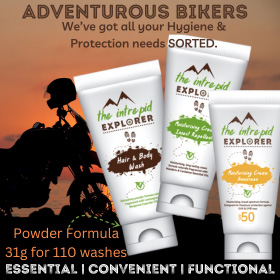 3Likes 3Likes
 |
|

14 Jan 2011
|
|
Registered Users
Veteran HUBBer
|
|
Join Date: Jul 2009
Location: USA
Posts: 143
|
|
JAN 13TH. GETTING THE MOTOR OUT OF CUSTOMS
Jared emailed me with the delivery date of the engine and the waiting was over. The crate would arrive in Buenos Aires on Monday, and it would be ready to be picked up by Tuesday. I packed a little backpack with a shirt, my knife, my small laptop and headed out for the capital city, 500km to the north.
While we were searching for parts in the early stages, Rich Suz, a fellow motorcyclist emailed another GSR member, Adrian Sayanes, in Argentina for help. Adrian emailed me his phone number and offered his assistance, so I took him up on it. He would pick me up at the bus station in Buenos Aires when I arrived, and would help me to get the engine out of the customs.
I had to take two buses to get to B.A. One from Otamendi to Mar del Plata and another to B.A. The main Buenos Aires bus station is the size of the Atlanta airport. With hundreds of bus companies, gift shops, restaurants, and piles of luggage, it was overwhelming for a guy who spent the last two months in one of the most desolated part of the world. The area was packed with Bolivian immigrants who were sleeping behind the fences in the open.
I met Adrian and his brother Esteban at the station. They had to take a long train ride and a bus to get to me, and from the first moment they were nothing but helpful. After a drink at the station, I was relieved to find out that they both spoke very good English, and we got along well. They generously put me up in their mom’s house, and fed me the most delicious pizza I’ve ever had.
I was tired and fell into a peaceful sleep, but woke up at 3:30 am to a racket. The skies were as bright as day, and small rivers were forming in the streets from the massive thunderstorm outside. The rain came down with such ferocity that it killed nine people in a flash. I kept thinking of the poor immigrants that were camped out in a canal next to the railroad tracks under plastic sheets and inadequate shelters.
At 7:30 am, we tried contacting AmeriJet, the airline which shipped the cargo, but there was no answer. We called and kept calling until at 8:30, we finally got through. They didn’t have the engine nor did they know where it was! The guy said that AmeriJet doesn’t fly into Argentina, and they must have put it on another flight. He asked for some info and said he’d get back to me on that. He didn’t sound very promising, so Adrian and I headed out in search of internet so we could call the AmeriJet headquarter in the US to find out what to do. We found a little café with internet, and set up our command center. For the next two hours, I called everyone I could, and we finally succeeded. The engine came on another flight from Florida and it was at the airport already.
With no time to waste, we started our quest at the airport in the hot and humid weather of B.A and it didn’t stop until 8:00 pm. Since we didn’t hire a customs broker, we had to do everything ourselves, and not knowing what to do, we walked around aimlessly and did our best. Actually Adrian did his best. I was just the guy who followed him to the bank, and coughed up money for this paper and that paper. Right off the bat, the airliner charged us $95 for something they couldn’t even explain themselves. It had something to do with the storage and transportation inside the airport. We chased papers one office after another until at around 4 pm; we first got to see the crate. It was monstrous as I expected. The boss man came to inspect the contents, but they had to get into it first. It took a guy with an electric drill a good while to extract twenty or thirty screws from the top cover just to expose the top of the engine. So they weren’t too enthusiastic to dig in further which would reveal the expensive new parts from Z1 enterprise.
The boss man said that importing a complete engine for personal use was illegal in Argentina, but he made an exception; reading Jared’s letter explaining the situation in English and Spanish. He appraised the value of the complete motor at $400 (the new gaskets and seals alone were 400 bucks) and set the tax at 200%. So we walked back to the bank for the 6th time and paid the money. As we thought it was over, they charged us another 90 bucks for storage fee, inspection fee, (for the guy who wrestled with the screws to get the top off) and forklift before releasing the engine to us. They charged us for two days of storage, but in reality, the engine arrived at the airport at 11 pm on Monday, and we were taking it out on 6:00 pm on Tuesday, not even a full day! But who can argue technicality when bureaucracy prevails every time. So again I paid the man.
Now that we had the engine, we had no way of getting it back home. Adrian’s car is a small BMW and the crate was as big as his trunk. Opening the crate was out of question. Adrian found a guy and after negotiating, they loaded the box in the back of their van for another 100 bucks to take back to town. (Adrian paid for the van and would not even consider being reimbursed, thanks again Adrian). The van driver suggested for us to go ahead, and he would follow, but I wouldn’t have any of it. I jumped through way too many hoops to get my hands on this engine and I wasn’t about to hand it over to anyone else. I rode in the back with the engine while Adrian took the lead to his house.
If getting the engine out of the customs was hard, we were faced with a bigger problem. The bus company refused to take the engine as my luggage due to its ungodly weight. The train turned out to be full and not going to Otamendi, and renting a car from B.A to Otamendi was $350 one way plus gas. We called everyone we knew for hours, but no solution came out of it. So we gave up for the night.
Adrian invited me to his place to have dinner with his girl friend, and they fed me delicious foods until I was about to pop. He dropped me off at his mom’s house gain and this time I slept the whole night after three days. The next morning I woke up with good news. Adrian found a cheap trucking company to take the engine to Otamendi, but we had to drop off the crate at their terminal. Adrian’s mom called around and found a van with a driver for $45, and once again we loaded the crate and headed for the terminal. Another $40 later, the engine got loaded up and it will arrive in Otamendi on Friday. The madness was over. Esteban, Adrian’s brother, took me to the bus station and put me on the bus to Mar del Plata, and I was home free.
Adrian and his whole family literally spent two days on the phone to make all these arrangements, and I have no clue on how I would have done it without their help. Adrian skipped a day work without pay, (despite getting in trouble) and spent every minute of it helping me with anything and everything. I don’t know how I could even begin to thank these amazing people who extended their generosity to a complete stranger with just an email.
When I came to Argentina, I was impressed with its vast landscape, towering mountains and beautiful glaciers, but what most strike me is its people. Nowhere in the world have I ever been this welcomed as Argentina. It’s an honor to be in this beautiful country.
__________________
Many thanks to all the members who've contributed to this noble cause.
|

22 Jan 2011
|
|
Registered Users
Veteran HUBBer
|
|
Join Date: Jul 2009
Location: USA
Posts: 143
|
|
JAN 22ND. TO THE NORTH
I checked very connection, every bolt, every cable, but I just wasn’t ready to push the start button. I lit up a cigarette and stared at the bike for the longest time. It was 45 days since the last time I road this bike, and 44 days that I was stuck in the village of Otamendi in Argentina. The whole world went above and beyond to get a new engine to me down here, so it felt surreal to be only a push of a thumb away from freedom. That’s how prisoners must feel I suppose.
When the engine got here, I immediately got to work and retracted a million drywall screws out of the crate to free the engine. It was so well packed (thanks to Jared’s hard work) that the airliner could have just air dropped it at the farm, and it would have survived. By the time I got the engine out it started to rain, and it didn’t stop for the next two days. But I could care less if concrete blocks came down from the sky let alone a little water. It was like Christmas. There was a complete motor, lots of shiny new parts from Z1 Enterprises, and a replacement final drive to swap out the battered leaky unit. With the help of Juan (my very helpful neighbor at the farm) we pushed and shoved the entire block on the frame, and fastened it tight.
For the next two days I scavenged everything I could from the old motor that was in a better shape, and installed it on the new motor. I swapped the drive shaft, final drive, stator cover, ignition cover, bolts and even the oil pan with all new seals and gaskets, and proceeded to time the engine, adjust the valves, replace the air filter, and installed new plug wires on the coils. Then I fired up the soldering iron and soldered every connection. It looked greasy and dirty, but beautiful.
It was time. I poured a gallon of fresh gas in the tank, filled up the crankcase, final drive and transmission with oil, flipped the petcock to prime and pulled the choke. Finally I pushed the start button. The motor turned a few times and it roared to life. My eyes were wet and I couldn’t believe that I was free at last. Hearing the perfect sound of the new machine was like a lullaby, and I listened to it like a good song. The job was done. I turned off the engine and fell asleep as the skies outside poured their hearts out with rain.
I woke up the next day to take out my baby for a ride. As I pulled out of the driveway the front tire slipped on the mud and I went down. I was baffled. A deep slippery mud covered the driveway, and I hit the ground no more than twenty feet from my room. I picked up the bike and mounted again. Mud or no mud, I was going out for a ride. The road from the farm to Otamendi is 3km long, and the rains turned the soft-dirt road to chocolate pudding with standing water in every pothole. In the first 500 feet I fell three times and I finally gave up. The tires were covered with sticky mud to the point that the front fender was scarping on the mud. With much difficulty, I picked up the bike for the last time, slipping and sliding in the process, and headed back to the farm defeated.
There was nothing I could do but to wait for the sun to dry up the road. I had better luck the next day and I finally hit the tarmac with no fall. I took the bike straight to a carwash and for six dollars; two guys washed the bike for 45 minutes. (I needed it clean so I could spot oil leaks.) Then I went out for a 100 miles test run. It ran great, and to my delight, there was no oil leak, except a little sip from the clutch shaft seal which wasn’t a big deal. (I’ll replace it in Buenos Aires). I checked the spark plugs, and they were all black and whitish with no excessive carbon, no caked white stuff, and no oil. She was ready to roll. I took my time to organize my stuff, fix little things here and there, and wash my cloths before getting back on the road. I said my goodbyes to Tati and his family in Mar del Plata, and threw a thank you BBQ party for Juan’s family which helped me immensely during my stay at the farm.
I’m leaving tomorrow morning for Buenos Aires. The route is set to go north for Uruguay, Brazil, Paraguay, Bolivia, and in western Peru load the bike on a dinghy and float the whole length of the Amazon River to the Atlantic Ocean. From there finishing up Venezuela, Surinam, New Guinea… and finally jump the big pond for Africa.
I can never thank those who helped me get back on the road enough. My gratitude goes to Jorge (Tati) Zmud for putting me up in his mom’s house and his place for 48 days free of charge, and for showing such generosity and hospitality to a complete stranger. I made a friend for life. I also like to thank Juan de Martin and his family for feeding me countless home cooked meals and the much needed help with fixing the bike.
I’m indebted to the GSR community for all their troubles as they literally put together a complete motorcycle in one month, and shipped it down here. It’s inspiring to know that I have so many brothers that I’ve never met, but with a single line, they come to my aid at the time of need. I’m honored and humbled to be a part of this great fraternity for I know that they are as selfless as they come.
I’m also indebted to Z1 Enterprises for sponsoring this expedition and delivering the much needed parts with such short notice. Jeff Saunders went above and beyond the call of duty to order everything he didn’t have in stock from Suzuki, and ship them to Jared for the engine makeover. They are great folks who know our bikes inside out, and serve us with care.
I would be remiss not to thank Matt Hanscom for donating the engine, Cliff Saunders for donating the final drive, Sean Pringle for his magnanimous donation which covered the biggest portion of the shipping cost, and those who covered the rest: Jared Williams, Gregory Quinn, Gib Acuna, Barron Fujimoto, Lynn Minthorne, James south, Tom Kent, Joshua Russo, Brandon turner, Robert Hayward, Eric bang, Merrill Oates, Richard Stiver, Dale Dunn, Howard Fairfield, and Daniel Provencher. Forgive me if I’m missing any names here, I don’t have the updated list.
And last but not least, I’d like to thank Jared Williams for his diligent and attentive service to this organization. Time and time again, he has proved to be a blessing, and he continues to impress us all.
Thank you guys for everything. Stay tuned as I hash through the Amazon jungles.
__________________
Many thanks to all the members who've contributed to this noble cause.
|

12 Feb 2011
|
|
Registered Users
Veteran HUBBer
|
|
Join Date: Jul 2009
Location: USA
Posts: 143
|
|
Hey guys,
I haven't been in a good enough shape to even try to post the blogs here, but here is the run down. The last two blogs are at respectively:
Feb 6th. Touring Uruguay | Motorcycle Memoir
And
Feb 5th. Entering Uruguay | Motorcycle Memoir
They cover my travels to and out of Uruguay and the stories of fixing the bike and more at Eliseo's place. Here's the latest one to be up to date:
FEB 11TH. NO MAN KNOWS MY HISTORY
Is it the struggle towards the goals, which makes mankind happy? Or is the goal the struggle to stay conscious in the midst of ghastly twinges? What is the value of having goals for our own sake? After 30 years of living on this green and blue ball, I know one thing… they all vanish… It is merely a question of time.
All I remember is the screech of the car tires behind me trying to avoid collision, and the sound of metal scraping on the wet asphalt in the Paraguayan tropics. Just moments before the slide, I tried to pull over to the shoulder to wipe off my visor, and that’s when I went flying to the middle of the road.
When I left Argentina for the beautiful Uruguay, I was happy with no worry in the world. The bike was fixed, the hospitality of the locals was top notch, and the weather was glorious if just a little hot. But my mind quickly tuned into the ever-changing state of this expedition, and with that came the thoughts, and agonizingly hurtful memories of my recent relationship. Explaining the causes and details is not something I’m willing to do, but the outcome was devastating nevertheless for both of us. And with every mile, this pain became more tangible to the point that it was unbearable to carry on. Somewhere in northern Uruguay, I got sick. I started to vomit few times a day and eating became a chore. I tried to force-feed myself, but I couldn’t hold anything down, and the burning fever skyrocketed to compound my misery in the already hot weather. But my deteriorating physical condition was no match for the despondent mental state I was in.
I rode day after day with no real destination as my compass pointed north towards Paraguay and Bolivia. The perpetual fights and indecisions went on with Cynthia via emails and phone calls, and I hoped against hope just to have something to cling on to. I met amazing people on the road and they all showed me nothing but the greatest care and love, but I failed time after time to even take out my camera to snap a photo of them to remember them by.
For two thousand miles I hallucinated. So when I found out that I washed my passport inside my riding jacket in the washing machine for two cycles, I wasn’t one bit surprised. My only identity and my ticket out of this land now looked like a watercolor painting of a shity story as my stamps resembled the famous painting; “Persistence of Time” only more incoherent. My importation papers for the bike looked like a wet clump of toilet paper, and I didn’t even notice that until I reached the border of Paraguay.
I spent hours at the border going from one office to another to beg the apathetic officials for mercy, and at last I succeeded. This was a true test of my Spanish limit and, I was exhausted when I received my entry stamp and stepped foot in Paraguay.
I rode towards Asunción, with nothing on my mind but Cynthia, and I lost my focus on the road and my surrounding. For the first time in my life I hit the ground while riding a motorcycle. I spent years perfecting the art of alertness in traffic, but I succumbed to what I knew too well. I let my guard down, and I simply didn’t think of what any idiot would already know. I pulled into a muddy shoulder after heavy tropical rains at speed, and the rest is history.
I have to get my focus back, and this country is going to be the place to do it. Paraguay is beautiful, but also is one of the poorest countries in South America with a real grip of poverty, and malnutrition chocking its population. Countless skinny and dirty innocent little faces made me realize once again that nothing in the world is ever worth fighting for than standing up for those who can’t. I’m here to stay and I’m here to do what I set out to do. I tried to take a trip, but the trip took me.
We find after years of struggle that we do not take a trip; a trip takes us.- John Steinbeck
]
__________________
Many thanks to all the members who've contributed to this noble cause.
|

12 Feb 2011
|
|
Contributing Member
New on the HUBB
|
|
Join Date: Mar 2008
Location: Omitama, Japan
Posts: 4
|
|
|
Great trip!
Hey Chris-
When I saw that someone was braving South America on a vintage bike I started reading and couldn't stop. My girlfriend and I are leaving Colorado bound for Argentina in May, and we spent a good deal of time choosing a bike. I'm a vintage guy, and thought a 1971 Moto Guzzi Eldorado would be suitable - a 41 year old Italian motorcycle in rural South America, what could possibly go wrong? ;-) Anyway, her common sense took over and we got an '04 V Strom 1000...oh well. Back to the point - thanks for doing this trip the way you're doing it. Reading through your posts it seems that about half of your experiences and new friendships have come about due to the bike's character, and that is an aspect of adventure travel I fear people with modern machines miss out on. I look forward to reading of your continued travels, and hope that we can cross paths if you are still in the region this Summer/Fall. Your efforts capture the spirit of adventure I feel we are all seeking, and your charity and awareness efforts are an admirable motivation. Good luck, and please keep posting!
|

15 Feb 2011
|
|
Registered Users
Veteran HUBBer
|
|
Join Date: Jul 2009
Location: USA
Posts: 143
|
|
Thanks buddy for all the kind words. And i tell you that you did the right thing by going with the Strom rather than a Guzzi. Old bikes are like gold here and everyone loves them, but if you have a job to go back to or actually care about riding rather than reinventing the wheel, Classics are not a good choice 
I'll be down here and slowly making my way back up towards Venezuela, crossing the Amazon. Drop me a line when you get closer and we can have a  somewhere.
Cheers,
Chris
__________________
Many thanks to all the members who've contributed to this noble cause.
|

15 Feb 2011
|
|
Registered Users
Veteran HUBBer
|
|
Join Date: Jul 2009
Location: USA
Posts: 143
|
|
|
FEB 15TH. BACK TO TROPICS, PARAGUAY
With every fall we learn something new, and with every rise we stand taller. This only holds through if we accept the reality and move on. And best of all, it gives us a chance to evaluate who’s a friend, and who’s a foe, and who to keep and who to let go. My friends list is much shorter now, but more realistic.
As I have been blessed many times, I managed to meet some of the best people I could wish for in Paraguay. I met a cute and very down to earth girl in Asunción named Leticia. To my delight, she spoke very good English, and showed me much of the city. We became friends and by the time I left, she was like a little sister to me that I never had. I stayed at a flat all to myself, and recuperated. I spent the next few days getting back to shape by force-feeding myself and trying to get a grip on reality, and Leti did her best to cheer me up. It was nice to have a friend to talk to and fight like teenagers about music and travel. Leti and her mom looked after me, and I’m very gracious for their hospitality.
While I was still in United States, a friendly biker named Robert Rolon from Paraguay sent me an email, and told me to count on a friend when I get there. Robert is a civil engineer and economist who studied in the states, and one hell of a genuine guy. I called him up in Asunción and we all went out to dinner joined by his beautiful wife, and his good friend Christian. Robert works at a sugar mill in a beautiful country town of Teibcuary, and of course he invited me to go visit.
Paraguay is landlocked between Brazil, Argentina and Bolivia and it truly is a lovely country. With only 6 million inhabitants, it’s a wide-open country with miles of nothing especially in the north. Most of Paraguay’s economy comes from agriculture, and farming and it’s no surprise. Everywhere you look, there’s an exotic tropical tree with shiny, and delicious fruits hanging from it. The people are amazing, the weather is almost perfect with a permanent chance of rain, and it’s nice to know that Paraguay is the only bilingual country in South America. Spanish is spoken everywhere, but the native language of Guaran
__________________
Many thanks to all the members who've contributed to this noble cause.
|

21 Feb 2011
|
|
Registered Users
Veteran HUBBer
|
|
Join Date: Jul 2009
Location: USA
Posts: 143
|
|
FEB 21ST, THE BEAUTIFUL PARAGUAY
All the struggles, up and downs, and self mutilations finally found me in an emergency room. High fevers and not being able to breathe didn’t leave me much choice, but to listen to Robert and see a doctor. Robert generously put all the medications on his company account as if it was for himself, and I started medicating with colorful pills and drops.
The doctor urged me not to get out of the bed, but the prospect of staying still was too much to even consider. So we loaded up and headed out to the countryside to have a look at the beautiful Salto Cristal water fall, joined by Leti, her mom and grandma. The climate was tropical and very hot, but equally beautiful. Lush vines and green trees obscured the path down to the fall, and we trekked down for a good 45 minutes to get to the bottom. The route was almost 90 degrees down with class 5 scrambling, so we had to leave Roberts’s 8 months pregnant wife Sandra, and grandma at the base camp.
I’ve seen a lot of waterfalls, but Salto Cristal stands out because of its secluded location, and climate. The water was cold and it was a welcoming relief to my fever. We spent a few hours swimming, and laying in the sun before leaving the heaven. Now that I look at the pictures, I look whiter than Casper himself, and all the weight I lost concerns the hell out of me. So the next step was to fatten up.
The next day I made some Persian Kababs for the family, and although I couldn’t taste anything myself due to being sick, I devoured as much as I could to get some needed fat back. I visited the fascinating sugar factory with Robert, and we did some riding around Tebicuary. This town is very clean, with almost no garbage anywhere. The people are laid back, friendly, and always ready for a good fun. As most of South America, Dirt rallies are very popular in Paraguay and we had a chance to go and see the first race of the season. Although it rained a lot before the race, people pushed through the flooded roads on bicycle, motorcycle and small cars not to miss the race.
With Subarus and Mitsubishis being the predominant race cars, these amazing drivers cut through hard corners, and mud with unbelievable speeds and managed to keep their wheel on the ground. It was an exciting race and the locals did everything in their power to make it more fun, whether throwing their shirts on the track to have the tire mark as a trophy, or by jumping after the cars.
My stay at Robert’s house was a great experience and I got to know him and his beautiful family. He’s an amazing guy, with high hopes for his country. He welcomed me to his home and showed me nothing but good times. Paraguay is not a tourist destination by any means, and for no good reason. It is safe, beautiful, relatively cheap, and quiet. It’s a perfect getaway. Don’t miss out on this country, you’ll love it.
__________________
Many thanks to all the members who've contributed to this noble cause.
|

23 Feb 2011
|
|
Registered Users
Veteran HUBBer
|
|
Join Date: Jul 2009
Location: USA
Posts: 143
|
|
Totally unrelated but just for the change of scenery  Because how often do i get to hang out with Miss Paraguay again?
__________________
Many thanks to all the members who've contributed to this noble cause.
|

4 Mar 2011
|
|
Registered Users
Veteran HUBBer
|
|
Join Date: Jul 2009
Location: USA
Posts: 143
|
|
MARCH 3RD. CIUDAD DEL ESTE, PARAGUAY
Some people can’t travel alone. They have to have at least one other person with them so they can even begin to consider making any plans. Well, that’s not me. Ray Charles played piano, Hannibal Lector ate people, my gig is meeting people. Traveling with another person or group has its advantages (unknown to me), but in reality it kills a good trip. When you travel with others, you automatically have a company, so you’re less likely to initiate any interaction with others. Traveling alone doesn’t mean being alone. In contrary it affords you the time and interest to meet other people. And they are always a lot more interesting than the ones you take with you.
When we were at Salto Cristal with Robert’s family, we met a French guy on a bicycle touring South America. Robert naturally invited him to his house so the family number grew by one more. The weather turned unusually wet and it rained day after day until the ground couldn’t take it anymore. Dirt roads turned into mud pits, and prevented me from venturing south, and my visit with Action Against Hunger. (I cover the full story from there in the next blog.) So we stayed and watched the rain pouring down.
We finally packed up at the first break, and got on the road. On the way I visited a small town called Campo 9, and stayed with a couple of Peace Corps volunteers. In all my travels south of the borders, I always managed to find English speaking locals and travelers, but never any American. Now in the middle of nowhere, I sat with two American girls, Lyna and Julia, sharing stories, and laughing our asses off. Things got more interesting when I was informed that local supermarket stocked a few American condiments for the gringos in the area, and that included Ranch. Not Hidden Valley Ranch, but I wasn’t complaining.
It’s a cliché to make fun of Americans when they ask for Ranch at foreign restaurants, but now I know why they do it. Having chicken wings and ranch is like flying the American flag; it’s patriotic. So we dashed for the supermarket, and started our festivity. Pink Floyd played “Wish You Were Here” on the radio, chicken wings sizzled in the pan, and Budweiser lubricated the conversations. Only the Super Bowl was missing, and the occasional passerby cows reminded us that we weren’t on American soil.
I stayed with Lyna for two nights, and headed for the border of Brazil. One of Robert’s friends, Edson, came out to meet me and took me to his house in Ciudad del Este. Just when you think people can’t get any nicer, another guy shows up, and blows you away. Although Edson doesn’t speak much English, we got along great right off the bat. His family welcomed me with utmost hospitality and I felt at home right away.
Ciudad del Este is an interesting place. It’s a border town that sits between Argentina, Brazil and Paraguay, and according to US state department, it’s a place no American should dare to go. In reality, I like it. It’s a gigantic market with people from all over the world. Everyone is selling something, from cruise missiles to tampons; you can find something to your liking here. I had no use for armaments, but I needed new tires. Edson kindly took me to the market, and we found some 60/40 dual sport tires for the Bolivian Chaco. The Chaco region of Paraguay is mostly paved, but Bolivia has no paved roads except around big cities. My current tires are only good for highway use, and they have been bothering me to no end every time I go on muddy roads and sandy areas. Since I’m planning to cross the whole section of Amazon Rainforest inland, I need some serious preparation to see me through. Very few people have done this route so there’s practically no information available on the road conditions, and availability of gas. The only guy I know who successfully crossed the Amazon on motorcycle is Emilio Scotto, an Argentine rider who rode around the world on his Honda Gold Wing for 10 years. Although he didn’t cross the whole section, his account is terrifying nevertheless. The tires we bought are only for the “bad roads” in Bolivia, starting from northern Bolivia, I’ll switch to full knobies before going off the map.
When traveling, you have to keep your mind and schedule open. You will meet people who change your life, you go places that you never want to leave, and most importantly you find harmony and peace within yourself. That’s all traveling is; enjoying the little things as they come your way.
__________________
Many thanks to all the members who've contributed to this noble cause.
|

7 Mar 2011
|
|
Registered Users
Veteran HUBBer
|
|
Join Date: Jul 2009
Location: USA
Posts: 143
|
|
|
Dear friends, readers and supporters,
As you might already know, the recent rains in central South America has created disastrous floods especially in Bolivia. La Niña (oceanic atmosphere phenomenon) has damaged many regions in Bolivia. There are over 60 confirmed deaths and over 68,000 victims and still counting. Seven out of nine departments in the country are severely affected, and the rain continues to complicate the rescue and disaster relief. In department of Cochabamba alone, more than 20 rural towns are flooded, leaving more than 6,000 people homeless with no shelter or food.
After a long “linger” from the federal government, the president Evo Morales, caved in and finally, and declared a state of national emergency due to severity of the disaster. The National Contingency Plan La Nina 2010-2011 of the Defense Ministry gave priority to the most vulnerable municipalities, and has allocated a budget of about 20 million U.S. dollars.
We are organizing shipments of food and emergency supplies on the ground in Bolivia. I’m in Contact with the local rescue operation, and I am arranging the transportation from Paraguay and will travel with the convoy personally to the ground zero. Bolivia doesn’t have the infrastructure to deal with such disasters, and their only hope is foreign aids. Please join us in helping these people in the time of need, whether you can volunteer your time, your expertise or just cold hard cash. Every penny counts here, and there’s no time to spare.
I’m looking forward to your support and generosity.
__________________
Many thanks to all the members who've contributed to this noble cause.
|

12 Mar 2011
|
|
Registered Users
Veteran HUBBer
|
|
Join Date: Jul 2009
Location: USA
Posts: 143
|
|
I have written many words in the past two years. I have made my life a public pastime for your boredom, and in fact I have shared many personal moments in my life with you people; my relationships, my hardships, my laughter and my triumphs. So if you found it all so amusing, and awaited more of it, here’s a bit more. The problem is that most of you will not give a damn. It’s saddening that I get personal kudos by the dozen for posting pictures with hot girls, but not a word when I break the news that people are suffering somewhere not too far away.
Sometimes ago, someone mentioned that my readers don’t want to read about disasters and catastrophes because they want to read about beautiful places and to see exotic pictures. That they don’t want to think about hardships of others when they already have problems of their own. Maybe he was right. Maybe what I’m doing should be just a joy ride to fulfill just that. But I can’t. So I beg again. And I won’t stop.
Many set out to change the world, with their mosquito nettings, Ipads and hand sanitizers to arrive at an NGO in a strange country to do what they think is right. After a while they give up and head back home with a camera full of pictures to show to their friends, and although deep down they resent what the outcome, they justify it because that’s the way it is; living with guilt is not easy.
We need help, pure and simple. And by help I don’t mean prayers. So instead of sending me your non-perishable prayers, send food, medication and emergency shelters. Although my heart goes out to victims of the recent tsunami in Japan, I am NOT in Japan. I’m tired of Kansas City shuffles. I’m tired of humanitarian organizations and governments shifting their focus and resources once every hour to some other place that’s more news worthy. When an earthquake hits a place, nobody ever mentions Darfur anymore. No one cares about India anymore, and certainly no news organization will ever cover a “not so news worthy” disaster concerning bunch of brown people when a bigger and better one is brewing somewhere else.
This is not a one man job, but I’m pulling the rope one handed. Give me a hand. Whatever you can. If you’re good at cold-calling so call the damn corporations and get the money. If you’re good at selling lemonades, sell the lemonade. If you’re good at drinking $5 cups of latté all day, spare a cup and help these people. It won’t change your lifestyle, you won’t go broke, and I promise you that you’ll feel better at the end of the day. The following is my address to our board of directors, take a minute and give what you can. I’m begging you.
La Niña Flood Disaster Relief Assessment And Actions
Bolivia, 2011
By Chris Sorbi, On-site Ambassador
NATURE OF THE EMERGENCY:
Torrential rains heightened by the effects of la Niña weather phenomenon have flooded seven out of nine departments in Bolivia. The most affected regions are in the Amazon basin, to the Northeast where multitudes of Amazonian tributaries cross these plains. The rains have flooded several major rivers such as the Beni, Chirnore, and 14 de Semptiembre. Due to the unique geographical location of Bolivia, all the water from the Andes highlands will continue to flood this area well after the end of the weather pattern. It is my strong prediction that the scale of the damage, and loss of lives will increase as the waters inevitably continue to flood these lowlands.
The major complication has been the loss of crops with over 25,000 acres of growing-lands being under water in these regions amongst severe damages to houses, roads and basic infrastructures. The affected families rely heavily on their crops, and the floods not only have destroyed their source of food and income; it has destroyed the food reserve of the region as well.
According to the official reports, over 60 people have lost their lives, and several hundreds have been injured. These statistics are underestimations at best, as most of the disaster area is inaccessible by roads, and the predominant population consists of indigenous tribes of Yuracares and Yuquis. The Bolivian civil Defense has catered to number of families since the end of February, but they have reportedly exhausted their resources and are unable to provide further assistance.
NEEDS:
Beside basic food and clean water needs, we require immediate assistance to obtain temporary shelters. Schools have been used in the area to accommodate the refugees, but the number of refugee has increased dramatically, hence the need for improvised shelters in the area.
Staple foods to be delivered are flour, corn, rice, beans and vegetable oil. Transportation of live stock or meat to the area is next to impossible due to difficulty of crossing flooded plains, and lack of refrigeration. Priority in food distribution will be given to children, women and the elderly. Drinking water will be collected from rain, and by treatment of existing sources to simplify the operation and cut cost on transportation.
The need for volunteers to work and distribute the food is great, so a public announcement for immediate help is suggested. I’m in process of recruiting volunteers among foreign travelers in the area, but help from the United States and abroad is required. Professional volunteers are needed with experiences in the medical field as well as constructions.
OBSTACLES:
The food prices have increased radically in Bolivia so finding outside sources to truck-in the food into the region is imperative. I have requested the cooperation of the Bolivian government, and have been promised of logistical assistance on this matter. Furthermore, I have requested military and police support to secure the convoy through the region, and unrestricted passage through borders from the south. We will collaborate our efforts with the existing NGO’s and other international organizations in the field for the best possible results.
OPERATIONAL COSTS:
The work will be done on volunteer basis as always with no salaries to be paid. The operational cost will include the supplies, and transportation of the good into the region.
Average food prices are as follow:
Items Price
(USD)
Quantity in Metric Ton
Rice $850 1
Vegetable oil $1700 1
Flour $700 1
Beans $650 1
Immediate donations and sponsorships are essential to tackle this calamity, so I urge all the directors of the Transcontinental Humanitarian Corp. to use all the possible resources including public assistance, churches, schools, … to procure the necessary funds.
Sincerely,
O. Christopher Sorbi, Founder and CEO
March 8, 2011
__________________
Many thanks to all the members who've contributed to this noble cause.
|

14 May 2011
|
|
Registered Users
Veteran HUBBer
|
|
Join Date: Jul 2009
Location: USA
Posts: 143
|
|
MAY 13TH. THE LONGEST SHOPPING TRIP IN THE WORLD
When I was just a handful of years old, my uncle had an old Canon SLR camera which he babied throughout his life. He wasn’t a professional photographer, nor did he have a clue when it came to capturing stills. Nine out of ten photos were out of focus and badly framed, but no one knew any better. His camera was pretty much the only camera in the family, so my entire childhood turned out blurry and out of frame. Oh and if we ever touched that old dinosaur. Our only chance to examine the fine equipment was when he went to work. My cousin and I used to sneak in to take the camera out of its leather case, and touch the shutter release so carefully so not to snap a picture accidentally and get in trouble. I always wanted a camera like that, but all I could have was an ancient and broken black and white camera which used 126 roll films that were so old you could not even find them in museums anymore.
When Thomas Edison invented the first motion-picture camera, he fully understood what a breakthrough that was, but with today’s technology, we get to see a series of seamless stills at 30 frame per second and we take it for granted. When I first learned the physics of the motion picture I was very much interested in finding out more for myself. But again those days a professional film camera was more than a few years salary of a decent job. It took a long time for me to transition from stills to motion pictures, but when I did I never looked back. To me, a still picture only tells one fraction of a second of the story, but one second of video tells 24 to 30 times more of the same situation. I still love to take still pictures but I don’t get all hyped-up about a photograph the way I drool over a good video footage.
There are some professions in the world that don’t require the best tools of the trade. For example it would make no difference if Shakespeare wrote his entire collection with a broken goose feather or a Parker ballpoint pen; the result would have been the same. But if James Cameron shot Titanic with a cell-phone camera it would have been disastrous. He knew better. 200 million dollars later Titanic received 14 Oscar nominations; eventually sacking 11 of them. Titanic became the highest-grossing film ever made until Avatar came along in 2009. And that was his own film too. James Cameron was a school drop-out who drove trucks, and he had to take his first rental camera apart so he could figure out how to actually use it. It’s true that in most cases tools don’t make the artist, but in videography it plays a tremendous role.
From my early days of sneaking my uncle’s camera out for inspection, I knew that I had a good eye for pointing out the mistakes of others (and I arrogantly seldom acknowledged the good parts), so I became a critic. And like every critic, I was like eunuchs in a harem; I knew how it was done, I had seen it done every day, but I never did it myself. I arguably have seen more films that most. At times I watch five films a day. I watch them from credit to credit. I want to know the name of the soundman, the carpenter and even the location of the stock archive footage they used in the said film. I can tell instantly if a scene was badly shot, or edited by a crappy editor. I can point out the slightest awkward scene blocking that was not intentional, sound bites that start too early or music that fades too late. In a sense, I hardly enjoy movies anymore because I’m constantly thinking of what could make it better. It has got to have one hell of a story or a superb cinematography to watch it again. So sitting out of the ring and trying to judge the punch was getting old. I picked up a camera and started shooting.
When I set out on my mission, I honestly didn’t know how to get the attention of the audience to make them “aware” of the real poverty issues, and if I ever succeeded, it wasn’t because I was good at it. I followed the notion of persistence. I kept doing it until I got it somewhat right. I figured that if you leave a monkey with a typewriter long enough, he’ll eventually write Hamlet. I didn’t come close to writing Hamlet but I learned how to push the keys.
There’s no better exercise that doing the deed itself and filming is no exclusion. I could go to a film school but I chose a better way. I traveled with a man who understood videography better than anyone I could hope for, and by videography I don’t mean dollying an IMAX camera on tracks on a set, I mean guerrilla-style filming at its finest. Claudio von Planta spent a better half of his life in conflict zones and jungles around the world filming what made him tick; from Mujahedin struggles against the Soviets in Afghanistan to freedom seeking rebels of New Guinea fighting against Indonesian army. As I traveled with Claudio, I took notes every time he picked up the camera, from the way he positioned himself for the shot, from getting up-close and personal, from being a shadow on every move and from his absolute persistence on getting the best shot and not settling for an easy one. He became oblivious of his surrounding once the tally light came on. He climbed hills, hung from trees, walked in the middle of protests and he never got his eyes off of his subjects for anything. Honestly I can barely remember him when he didn’t have a camera in his hand. For 15 hours a day, and for over 100 days, I was in a company of a few professionals who took their work seriously, and I learned little by little the things they don’t teach you in schools. For the rest, I read as many books as I could find on films, from its history to odd ball techniques for arctic photography just In case I found myself filming ‘The March of the Penguins’ one day.
As Claudio shot his BBC series, I shot the same scenes, one from his angle and one from another perspective and compared my work to his for feedback. I shot over 90 hours of footage and I remember Claudio asking me what I was going to do with them. I didn’t have an answer for him then, but I knew what I could not do with them. They were shot on a crappy handheld camcorder with such mediocre image quality that I wouldn’t even consider it good enough for projection to a group of retarded monkeys. They were mostly mediocre B-rolls since I wasn’t filming anything in particular. But I knew they were good works in style considering I had no tripod, no light, no microphone to speak of and the camera didn’t work half the times.
My mistake was not getting the best tool for the job before I even started my journey, but again I didn’t know 100% how I was going to make people aware of world hunger. I had a vague idea but it was just an idea. I researched every possible camera for almost two years, spending hours at time reading pros and cons of each system for certain situations, but I could never find the “perfect” camera for my traveling style. I simply wanted a camera to match my limited space and unpredictable environment. There was no such a camera in existence. I wanted the system to have interchangeable lenses, shoot well in low light, have excellent image quality, full manual controls over every aspect, and preposterously I wanted it to be light, packable and in my budget too. Two years of agonizing research returned absolutely nothing until I had to alter my traveling style and budget to match my shooting needs. I finally got to a conclusion that if I was serious about videography, I couldn’t put a price or limitation on the equipment I needed. What exactly Claudio told me over and over during our conversations. I lost precious opportunities when I didn’t have the right equipment, but I was on the right track at last.
I settled for the best camera I could possibly budget for by cutting my two meals a day to one ration. I also planned on selling my DSLR camera and put the cash towards the video equipment. (At the end I kept the DSLR as I knew I would regret selling it later.) The new camera weighed a whopping 10lbs with no accessories. It was a shoulder-mount, and I could be spotted from a mile away as a Yankee, but that’s what would do the job for my meticulous taste. The whole package including professional audio equipment, tripod, lenses and storage drives was so heavy and expensive that I couldn’t get myself to ship it to South America trusting the postal service. Even if I managed to get all those goodies shipped to where I was, the customs would kill me on importation taxes the same way they killed me in Argentina when I was getting the motorcycle engine out. So I had to make an out of schedule trip to go shopping in the United States and bring the equipment back personally. I left my belongings behind in South America and hitched a free flight out of Asunción, Paraguay to São Paulo, Brazil sitting in the back with the flight attendants and keeping them company. It was a great ride, with unrestricted access to peanut bags and  . It goes to tell again that it’s not what you know; it’s who you’re sleeping with.
My plane landed in the enormous city of São Paulo a little after midnight, and I hitched another free ride to New York City a few hours later. TAM Airlines only fly to Florida and New York and I picked the Big Apple since I had a few friends around and I wanted a change of weather from the hot tropical South. I had no time to waste so I started my shopping frenzy the second I landed, and walked the Time Square to B&H photo, a sprawling photo and electronics emporium on the 9th Ave. After a couple of hours of being mesmerized by the American life after a long time of being off-the-grids I wanted to buy everything. I shoved giant New York pizza slices down my throat as I walked from one store to another to find what I wanted. When I was done going crazy in NYC, I hopped on a Greyhound to Boston, MA where my friend Jared Williams would pick me up.
It was nice to be back in the country even for a short time. A few times I ordered my food in Spanish by default, but I got used to speaking English full-time again. The downside was that I could understand everything that everyone said, and that was a lot of useless information to take in. As I kicked back with Jared fixing up his new Suzuki GS850 motorcycle and using the super-sonic internet connections of the Northern Hemisphere, the UPS guy kept on bringing boxes after boxes until I was penniless. I made a side-trip to New Hampshire to see one of my old friends, and before I knew it I had to get back. I had to take all these electronics back with me to South America, and most importantly I had to fit them somehow on the bike safely. The GS850 is like a freight train so I wasn’t too worried about the weight, but I had to make sure that they would stay dry and safe while riding.
Jared and I spent days looking for a suitable box to fit everything in, from Pelican boxes to even amplifier hard-cases, but we couldn’t find anything that would reasonably work. The Pelican boxes were tough and waterproof, but they weighed almost 30lbs empty and they were monstrous, not mentioning the steep $300 price tag either. So we improvised. We bought a semi-hard duffel bag from Marshall’s for 30 bucks, and made our own waterproof/shockproof case, making Jared’s living room a big mess once again. It had to be big, strong and absolutely waterproof and we accomplished that. When we were done with it, I could fit the video camera and two lenses, my big laptop, my DSLR camera and two lenses, jumble of audio cables, batteries, hard drives, light, microphone and a small pillow inside with ease and nothing moved an inch from their position.
As much fun America was, it was time to go. When Jared dropped me off at the bus station in Boston, I was loaded with two suitcases, a backpack and a giant camera in my hand. From Port Authority I chased the airport bus for 300 yards and I spent the next 6 days dragging this stuff behind me because everything that could go wrong did. As I touched down in Brazil, I was arrested. I had no visa for Brazil which wasn’t a problem as long as I was in transit and stayed inside the airport, but my Paraguayan visa turned out to be a single entry visa rather than multiple entry which I thoughts it was. Automatically my ticket was canceled, and I was scheduled to be deported back to US at 6 am the next day. No amount of begging in my nonexistent Portuguese made them sway so I played their game. The “law” was to have a valid ticket and valid visa to be considered a transit passenger, so I bought a valid ticket for a country that didn’t need a visa only three hours away rather than going half the planet back to United States again. For the 7th times in a row in five months I entered Argentina. They should make me an honorary citizen; I’ve never been to any other country that many times.
And the timing couldn’t be worst. That week was the Holy Week; the Easter weekend. South Americans take their religion way too seriously so the whole country was shutdown from Thursday until next Monday when I could get another visa in Buenos Aires for Paraguay. A good thing about Argentina was that it was relatively close to where I was going, and the food is exquisite. Specially the chorizos (sausages). So I indulged in a perfect weather in the capital of Argentina for 5 days, taking my time to see my friends and enjoying the Paris of South America. I had a royal welcome even without a notice, and I was taken care of as well as I could wish for. Finally on Monday, I managed to get another visa and took a bus from Buenos Aires to Asunción, Paraguay for another 22 hours to be reunited with my bike. I miss Argentina already. I could call that place home in a heartbeat.
The whole point of this excursion was to get the right tool for the job and I finally did. But I had some homework to do. If my limit was the camera before, now I was the limit for this camera. With a gazillion manual buttons and settings to mess with, it’s a not a point and shoot camera and it takes a skilled operator to produce a good image. I knew I could shoot half decent in available light, but the hard part was recording good footage in low-light and run-and-gun situations, trying to focus and set the exposure manually at the same time. I have an excellent 3X wide angle lens which is perfect for these situations, but as my luck would have it the back focus was faulty, and I had to send it off to be fixed. So to make the best out of it in the meanwhile, flashing my press-card I attended every night-event in the city, from concerts to parades and plays. And since it’s the 200 year anniversary of independence in Paraguay, there’s no shortage of entertaining events for another month. I kept on rolling films until I mastered the lowlight manual focusing, gain and proper exposure and got to know my machine as best as possible. To this day, I have not used this camera in automatic mode and I probably never will.
I’m shooting a Docu-Film (It has no boring interviews with the characteristic of a feature film) on “Over Population”, with its effects on economy, religion and poverty, combine with the adventure of motorcycling through the jungles. It is witty, shocking, truthful and chiefly entertaining [remember that I’m a critic, so if I say it’s good; it must be  ]. In a world where I can’t get the attention of people with anything else, the motion picture stands head and a shoulder above any tool I could use. If you have made it this far down this post, you are a rare breed, not many read for that long any more. My hat is off to you.
Stay tuned.
P.S. I was turned down on my first book proposal. Bastards. Who wants to read a random chapter and give me some feedback?
P.P.S I entered Argentina for the 8th time yesterday again. I had to renew the motorcycle papers. I can’t get enough of that country.
__________________
Many thanks to all the members who've contributed to this noble cause.
|

3 Jun 2011
|
|
Registered Users
Veteran HUBBer
|
|
Join Date: Jul 2009
Location: USA
Posts: 143
|
|
JUNE 3RD. OVERPOPULATION AND ITS EFFECTS
Poverty in simple language is: Deprivation of essential chattels that others take for granted. The more I traveled, the more I became aware of these “others”. These “others” were the middle class and higher class. And out of these two classes, the upper class took the cake every time. On average, the world poorest 20 percent holds a share of only 1.5% of the total private consumption in the world where the richest 20 percent amounts to 77% of the consumption. The middle class sneaks in somewhere in the middle with not much of an impact.
But somehow the poor and rich argument didn’t satisfy my curiosity. The more I looked around, the more I shuddered at the frightening population increase in the world. From the start of the human civilization the world’s population increased steadily, but something happened in the last 100 years. The population figures jumped off the chart. In biology overpopulation is a condition where an organism’s numbers exceed the carrying capacity of its habitat. It doesn’t necessarily depend on the size or density of the population, but on the ratio of population to available sustainable resources. For example, Antarctica is a giant piece of land – almost twice the size of Europe, but only has a few thousands human inhabitant. So besides the fact that it’s one hell of a cold climate, would it be possible to populate this landmass with millions of people? Perhaps. But that comes with adverse effects on the continent’s eco system as it cannot sustain that size of life.
Our planet is not big at all despite what many think. You can circumnavigate the entire globe in less than three days in an airplane. And almost everywhere you look you’ll see a sign of human intervention, whether farms, cities or ships on the ocean. So we are many. And we are here to stay. At the start of the 20th century, the world’s population was roughly 1.6 billion. By 1940 this figure had increased to 2.3 billion, and at some point in the year 2011 it finally reached the staggering figure of almost 7 billion.
Poverty doesn’t come out of nowhere just because rich people eat the share of the poor. It’s a big factor but not the only factor. The main factor is that there are too many mouths to feed with vanishing resources. Sure the world produces twice the amount of food needed to feed everyone, but at what cost? A very dear one: deforestation of the earth, poisoning the environment, melting the polar cap, genocides, slavery, wars, and turning the planet earth into a giant human feedlot to name a few. So what causes overpopulation? A simple answer would be too much sex. But to outlaw sex is sure to bring out every opposition from every group in the world. And since I’m guilty of enjoying this pastime myself, I will leave it alone because of self interest. But what can we really do to control the population?
Overpopulation in human accrued because of a very few simple factors: increase in births, a decline in mortality rates due to medical advances, increase in immigration, and industrialization of agriculture. There are hundreds if not thousands of organizations working on the environmental aspects of overpopulation except one: increase in birth rate. No one with a head on his shoulder has seriously tackled the biggest factor in overpopulation. And if they tried, it has always been vetoed by the media, the society and different interest groups to keep this taboo at bay. And those who work diligently to cover up the issue are our trusted friends in governments and various religious sects. All to make another buck, and control the people.
For start, one simple condemning of having more than two children from the Catholic Church alone could result in cutting the population growth in half and the poverty rate by landslide, but we never hear that from the Vatican. As a matter of fact, the official policy of the Catholic Church is very clear on this issue: a firm NO to contraception, contragestion, and abortion. And if we thought that disapproving the control methods was the only thing that the Vatican was concerned about, we’re in for a surprise. The Vatican doesn’t only condemn the population control; it promotes having as many children as “God wants you to have.” In simple words: as my children as you can possibly conceive with total disregard for their well being and their effects on the society. If that’s not what they mean, at least in reality that’s what happens.
Before you start bashing me I need to clarify one thing: to make it very clear I’m not attacking Christians, Jews, Muslims or any other religious groups. To me people are just people. Believing in God or not doesn’t constitute goodness or evilness. It’s what we do that makes us good or bad. The same way that millions of Christians are wonderful people so are the Jews and Muslims. But we often sadly relate the wrong doing of a few bad apples to the whole, and it does nothing but to generate hate. My goal is not to generate hate, my goal is to explore the truth and if the truth comes out to be what you didn’t want to hear, don’t shoot the messenger.
And the world is not getting any smarter either. There is a strong tendency for countries with lower national IQ scores to have higher fertility rates and for countries with higher national IQ scores to have lower fertility rates. And as many would like you to believe, it’s not the out of wedlock pregnancies that are the problem. In fact most children are born in legally or religiously bonded families. Worldwide, nearly 40% of pregnancies are unintended, some 80 million unintended pregnancies each year. An estimated 350 million women in the poorest countries of the world either did not want their last child, do not want another child or want to space their pregnancies, but they lack access to information, affordable means, and services to determine the size and spacing of their families. In the United States alone, in 2001, almost half of pregnancies were unintended.
In the developing world, some 514,000 women die annually of complications from pregnancy and unsafe abortion. Of those who survive, they give birth to 8 million infants who die needlessly every year because of malnutrition or preventable diseases. And what happens when the United States tries to help? Everything gets mixed up with the politics and thousands die because one senator who wants to get re-elected needs a catchy slogan: “Pro-Life”. Then millions of American can’t wait to line up at the voting booths to support what they think is moral without weighing the consequences.
I am personally Pro-Choice. And it’s not my choice to be for, or against abortion. Women have to make that choice. But shockingly to many Pro-Choice advocates, I don’t regard abortion as a population control method. The same as that I don’t regard wars as such. Killing live people is not going to solve overpopulation. What does help eradicate overpopulation is planning for that kid. And that comes with education not with abortion. Our best option is to focus on education about overpopulation, family planning, and birth control methods, and to make birth-control devices like condoms, pills and intrauterine devices easily available.
Knowing where I stand on abortion, I will say that the real matter here is not the abortion, whether you are in favor of it or not. The fact is that most women who are willing to have an abortion will go through with it even risking their lives, whether it is legal or not. In 1984 Ronald Reagan implemented a profane policy dubbed the Mexico City Policy or better known as the Global Gag Rule. Its main objective was to direct the United States Agency for International Development (USAID) to withhold funds from NGOs that used non-USAID funds to engage in providing advice, counseling, or information regarding abortion and family control, or lobbying a foreign government to legalize or make abortion available. If you didn’t get it the first time, I repeat it. This policy was NOT to prevent the foreign non-governmental organizations from spending the USAID contributions on family planning; it was to prevent them from even using their OWN funds that didn’t come from USAID for that matter. In a sense bullying these organizations with threats of sanctions and punishments to achieve a religious agenda.
And the Reagan administration knew too well that these foreign organizations were often the only health-care providers in remote rural areas, but elected to greatly contribute to extermination of 78,000 poor women who died because of unsafe abortion every year with its policy.
This policy prohibited aids even for:
Providing legal abortions even where a woman’s physical or mental health was endangered
Providing advice and information regarding the availability and benefits of abortion and from providing referrals to another health clinic;
Lobbying their own governments to legalize abortion, to maintain current law and oppose restrictions, or to decriminalize abortion; and conducting public education campaigns regarding abortion.
In 1993 Clinton administration stopped this policy, but history repeated itself when George W. Bush wanted to run for presidency and needed the “Moral Majority” vote. On his first day in office, Mr. Bush reinstated the Mexico City Policy as a thank you present to all his Pro-Life voters, but somehow he went on to exterminate millions of innocent people in the next eight years in the name of the good Lord. So the term Pro-Life is a selective term. It means that we get to choose who lives or die. Brown people should die and babies should be saved to be turned into dead soldiers when they grow up.
And of course a calculated political move; when Barak Obama took office, one of his first acts was to end this policy yet again to satisfy his Pro-Choice supporters, and this time the whole Christian world collapsed on him. The Vatican issued an amusing statement so colorful in language that baffled the media. Archbishop Rino Fisichella, head of the Pontifical Academy for Life (Supposedly there was a need for an academy of this nature, like the Vatican stance wasn’t clear enough!), responded that the repeal of Mexico City Policy was done with “the arrogance of those who, having power, think they can decide between life and death.” I believe they wanted to sue for copyright infringement more than anything.
It’s truly a sad thing that Iran is the only country in the world that contraceptive courses are required for both males and females before a marriage license can be issued. The Iranian government emphasizes the benefits of smaller families and the use of contraception. And it’s important to know that abortion is illegal in Iran. In the Iranian society these days, having more than two children is considered backward thinking. And yes, we are talking about the very same Iran that George Bush included in Axis of Evil.
Paul Ehrlich, the American biologist and environmentalist says in his book, The Population Bomb: “A cancer is an uncontrolled multiplication of cells; the population explosion is an uncontrolled multiplication of people. Treating only the symptoms of cancer may make the victim more comfortable at first, but eventually he dies – often horribly. A similar fate awaits a world with a population explosion if only the symptoms are treated.”
Enacted in 1970, Title X of the Public Health Service Act of the United States provides access to contraceptive services, supplies and information to those in need with priority given to persons of low-income. Title X as a percentage of total public funding to family planning client services has steadily declined from 44% of total expenditures in 1980 to 12% in 2006. Title X does NOT fund abortion and never has since its establishment. However, abortion opponents often take issue with Title X since 25% of all Title X money goes to Planned Parenthood affiliates. Although Planned Parenthood is prohibited from using federal funds to perform abortions, Pro-Lifers argue that any money given to Planned Parenthood from Title X frees up more non-federal money that can be used to perform abortions. Title X clinics and funding may represent the sole source of health care services for many of their clients. Of the 5.2 million patients served in 2009, 70% were below the federal poverty line and around 66% had no health insurance. In 2006, over 60% of women who received health care services at a Title X clinic identified that as their usual source of health care. Speak up people. Your silence is playing with lives of millions.
The truth is: reducing population from today’s level of over 6.8 billion to 4 billion would take slightly longer than 50 years if every couple, worldwide, agreed to produce an average of only two children. But it will not happen if the church continues to hamper all the efforts. We need to stand up and say enough is enough. Believe in whatever you like, that’s your freedom. But speak out when an arcane law is being shoved down your throat as a biblical fact. A law that doesn’t just affect the church followers, it affects the whole humanity.
So am I saying that not to have kids anymore? No. Not at all. I love kids and I would never say that. All I’m saying here is to be mindful of your actions. If you truly love kids, you should think about their children too. How is their life going to be affected when they live in a world that has 15 billion inhabitants and not a tree in it? Would you want to live in that world? How do you rationalize your large family when you know many more kids will die somewhere else in agony because your kids will take priority on the resources? How are you doing the gods work when over populating the earth will effectively set worldwide famines and horrible wars on its population? Is this truly what the lord wants? What would Jesus do? It’s a principal Catholic teaching that Jesus was an only child – so why not follow Mary’s step in life? I’m just tickling your conscience here, that’s all I can do. The rest is up to you.
The German monk and theologian Martin Luther once said: “God makes children. He is also going to feed them.” But I’m here to report from the heart of the disaster that God is not sending food baskets down here. God gave you brains also. Think for yourself. Teach these facts to your kids. Adopt a kid. There are millions of them out there. Have a family plan. Don’t have as many kids just because you can afford it; the world can’t. Take part. Sponsor a family and help them to change the world one less dead or poor kid at a time. I promise you, you’ll see the difference in your lifetime.
As for me, when most people blamed me for staying in one place for too long, I was working on two things. I started a comprehensive micro-finance program in Paraguay which includes over 30 children. These families were selected out of many qualifying families based on their willingness to better their life, their immediate needs and NOT their religious views. In fact they happened to be all Christian families extremely loyal to the Catholic Church. My conditions are simple: First rule is honesty. If they return the loan, they can take double of that amount the next time. They are obligated to cultivate their lands by growing what they can, raise chickens and small farm animals for their own consumption. Plant a tree, burry their trash and most importantly send their kids to school not one excluded. No stupid thank-you letters, no phone calls or picture drawings. They are supervised by locals and best of all they are not given a free charity. That’s what most organizations overlook. Charity makes people lazy and ashamed – putting them to work makes them proud, useful and productive. They are hard-working and they are determined to make a difference in their life. I actually come to like this so much that I’m going to set this up in every qualifying country I will travel to
And I’m getting as poor as any down here. I own no house, no car, no real-state holding, no nothing really. I have two cameras, a cooking pan and two sets of cloths. I eat once a day, take a shower once a week, and the last time I drank a  was three weeks ago. The motorcycle, the laptop and everything else on it is not even mine; I donated them to the corporation along with thousands of dollars of my savings. To be honest, I have $1300 in one bank account and $600 in another. And I don’t get paid for what I do, nothing, nada, zero. But it’s a satisfying job, and I wouldn’t change it for the world.
I have invested the remainder of my meager funds to film as much as I can for the upcoming documentary. When it runs out, I’ll push a broom to roll another tape. It’s a film from the heart of these people, regardless of their religious views or political party. It’s a first-handed struggle of the masses mixed with my story; uncensored and unbiased. I won’t ask you to buy me a  , but I’ll ask you to help them to help us. We are more dependent on these people than we think.
“Freedom consists not in doing what we like, but in having the right to do what we ought.”— Pope John Paul II
__________________
Many thanks to all the members who've contributed to this noble cause.
|

21 Aug 2011
|
|
Registered Users
Veteran HUBBer
|
|
Join Date: Jul 2009
Location: USA
Posts: 143
|
|
Running a non-profit organization and going on a blind-date is not all that different – in both you never know where you are going to end up; home with a bottle of cheap whisky alone, or in bed with a big titted blond. The non-profit sector has become every bit as greedy as the for-profit sector, and in some cases, it has surpassed the latter. In today’s market, the administrative cost and executive compensations have become a direct derivative of the organization’s net income. The more the organization receives, the higher the salary of its executives will be. A 10 million dollar corporation will have a surplus of 1.5 to 3 million dollars to candy out to its executives and other expenditures.
As in the for-profit sector and specially the financial sector, the non-profit laws had been wacked to pieces to insure that top players can enjoy their private jets and multi-million dollars homes in the Caribbean. The IRS has a laughable term describing the circumstance which gives the green light to this shameful money sacking: “Reasonable Compensation.” Reasonable compensation is defined as “the value that would ordinarily be paid for like services by like enterprises [for-profit] under like circumstances.”
Going by this vague standard, the 2.5 million dollar salary of William Barram of the American Cancer Society, or the 1 Million dollar salary of Gail McGovern of the American Red Cross is rightly justified, because the net income of their respective organizations is comparable with the for-profit enterprises of their class. And when watchdog groups disclose these numbers with public and a few souls raise their concerns, the kind of Miss Betsy Brill, publish defensive articles in nation’s economic papers like Forbes to tone down the criticisms. In her article for Forbes Magazine, titled “Nonprofit CEOs Are Worth Every Dime”, Miss Brill goes on and on to why these thieves are entitled to public donations that were intended for a different purpose than buying another Rolls-Royce:
“…critics may cause donors to question–or even to pull back–their charitable giving at a time when nonprofits are struggling to meet an increased demand for services in the face of government cutbacks and dwindling private support.”
What did she just say? “At a time when nonprofits are struggling?” Miss Brill never explains why the “struggling organization” is paying a man a seven figure salary if it is indeed struggling. But she is quick to add: “Keep in mind that the highest paid CEOs are overseeing complex multimillion-dollar ventures.” Does she have alternative motives? You bet.
For many years prior to the market collapse of 2008, over-fed, over-paid, white-color financial analysts told us the very same thing, “AIG is doing wonderful, Lehman Brothers is at the top of its game. Don’t fear, invest, buy this, give them your money…” And when the economy collapsed and 700 billion dollars came out of the taxpayers’ pockets to bail out these criminals, these very same analysts justified their deceptiveness by saying that what they said was “just an opinion”. They got paid to put AAA ratings on worthless Collateralized Debt Obligations (CDO) and investors bought these high risk worthless pieces of ****s because credit rating agency’s like Moody’s and Fitch endorsed them and backed out later. Miss Brill doesn’t work for a Credit Rating Agency, she owns a counterpart of it in the non-profit sector. She is the President of Strategic Philanthropy, Ltd., a philanthropic advisory firm in Chicago. Same ****, different name.

The non-profit entities are not that different from for-profits either. Where there is money there will be always greed. Where there is money there will be also power, and mankind is prone to abuse both. In for-profit corporations, the share holders and investors question the executives on how their money is being played, but in non-profit world, the faith of the donors are in hands of a few volunteers and more often than not, the organization’s CEO holds a dictatorial power over the governing body. It is irrelevant that the board has the power to hire and fire the CEO, the CEO in a non-profit organization is nevertheless the dictator and the law maker of the organization with only the IRS to answer to. And the IRS position is already clear: “reasonable compensation.”
The only difference is that when a for-profit corporation goes bankrupt, shareholders and investors lose money and their outcry makes the evening news, but when a non-profit organization goes under, there is no one to take the hit. Donors give less than a **** – hey, they gave the money away in the first place – and in most cases they don’t even want to know where their money goes as long as the organization has a picture of a skinny black baby or a woman with one breast cutoff on the header of their website. The real victims are the poor, the class that was supposed to be served, but they have no voice. Their voice, if any, gets lost in the roar of the private jet engines and sport cars of the thieves who stole their money in the name of making a difference.
We are being told on an alarmingly increasing rate, that being non-profit doesn’t mean not making a profit. More and more non-profits are running mafia-style businesses as they hire and compensate their own relatives inside the organization with many six figure incomes. Then the seven figure elite supporters come in and tell us that only those making these ungodly sums have the intellect and capability to pull off the operations in these large entities. But, long ago, before there were these salaries, people did just that and the poor received the majority. Imagine that.

It’s not the legality of these gruesome compensations that is the issue; it’s the morality of the whole business. I founded a non-profit organization because I was compelled to help people and I surrounded myself with those who had the same inkling. Do I have the power to abuse them? Absolutely. But at the end of the day I know, what I take is what could have put a smile on a child’s face. To me that’s the drive not the salary. Maybe I’m radical but I do see the struggle of the poor first-handed on daily basis.
I leave you with one question: is the job of managing a charity really more “complex” than running a 300 million population country? If not, how do you justify salaries as large as six times of the US President? Don’t we have any talented people willing to manage charities in the same unselfish spirit as their donors? If not, we should outsource these jobs too China too, they sure as hell will do a better job it for a much lower wage.
__________________
Many thanks to all the members who've contributed to this noble cause.
|

24 Aug 2011
|
|
Registered Users
Veteran HUBBer
|
|
Join Date: Jul 2009
Location: USA
Posts: 143
|
|
AUGUST 23RD, 2011 - ENTERING THE ARGENTINE CHACO
I’ve ridden a lot of miles and visited a long list of places, and it makes it hard to answer the age old questions of, “What’s your favorite country? – Where was the most beautiful place? – What country has the prettiest girls?” They are almost impossible to answer as every place has its own unique ways of life. Town to town and time zone to time zone, everything changes. The language, the food, the people, and of course the weather, but I can competently say that my recent trip was one of the most enjoyable trips I’ve ever taken.
Saving you the headache on the charity work, I needed to renew the permit for the motorcycle and not wanting to pay the customs and immigration a 300 dollars fee; I decided to leave Paraguay for a few weeks. My options were Bolivia to the north, Brazil to the east and Argentina to South and West. From the day I left Argentina, I was disappointed that I didn’t get to visit the northern regions of it. In fact, most Argentineans I know have never been to these parts, let alone the tourists. Northern Argentina holds a big portion of the Gran Chaco, a sparsely populated, hot and semi-arid lowland region of the Río de la Plata basin, divided among Bolivia, Paraguay, Argentina and a small portion of Brazil. Those who have visited the Chaco region are divided into two groups, they either consider it hell on earth or they love it so much that can’t shut up talking about it.
My destination was the foot hills of the great Andes range on the border of Chile to west, then I had no idea where from there. I had no map, my GPS was of no use in this alien land and I could care less about any of that. I decided to take my friend Lourdes with me on the trip as she had never been to that part of the world either, but we had one problem. Ever since I added a giant box for my camera gear to the back of the bike, I only went for short rides and I had no idea how it would act in strong winds. Also, the box covered the back rack and now I had no place for my dry bag. Going solo was not a problem with all the gear but adding another person to the mess was just too much. On the morning of our trip, we hauled everything from Lourdes’ apartment on the 7th floor to the underground parking and I started to fill the boxes. In addition to my normal provisions, we were packing arctic clothing since I figured it would be bitterly cold in the mountains (It’s still winter down here), my guitar and 40 lbs of camera equipment. The mound of gear was unnerving and every minute passed I got more frustrated. There simply was no room for another person and sensing that, Lourdes suggested that I should go alone with a sad look on her face. I couldn’t do that to her. She was so excited to go on her first motorcycle trip and I didn’t have the nerve to turn her around at that point. I emptied the boxes again and got rid of anything that wasn’t absolutely necessary with the exception of the guitar. Once I was done with packing, the bike was so heavy that I could barely get it off the center stand.
We rolled out of Asuncion and reached the Argentine border around noon. The border crossing (my official 10th entrance to this country) went without a glitch and soon we were on the open roads heading northwest with no maps to where I thought the Chaco region was located. The traffic dwindled down and apart from the occasional kamikaze bugs, there was just the hum of the engine and the wind. The bike handled marvelously and I soon got used to the additional weight. The scenery started to change dramatically from the lush green tropics to brownish dusty landscape, with patches of boreal forests, funny looking Palo Borracho trees and occasional palm trees. The Palo Borrachos have a giant trunk not unlike a drum and they hold an enormous amount of water in their trunk, a rare commodity in these hot and sunny regions. The road was as flat as glass, and straight as an arrow. We stopped in a middle of nowhere where I saw a sign for meat and bought 3 pounds of ribs for dinner. There was no refrigeration or USDA stamps, the meat was simply hanged in a dark room from the ceiling, with maggots visible here and there – just the way I like it. At sun down I spotted a working ranch in the distance and headed straight for it. As I tried to slow down I flipped my helmet up and as my luck had it, a wasp flew in and as I tried to get him out, it stung me on my cheek. I cursed all the gods and continued for the ranch. A tiny Indian lady with her kids and a herd of dogs greeted us and we asked for permission to camp out at her place. She was the caretaker and the ranch was a beautiful place, with cows, goats, pigs, horses and as it is common in this region, a coal making oven. We pitched our tent and cooked the meat on the lady’s grill (they cook on open fire all year long, the grill is their only stove) and shared it with the family. She brought out homemade empanadas and after a countless rounds of Mate, and a few tunes on the guitar, we retired for the night. We would start the next day for the heart of Chaco. Stay tuned.
While I edit the pictures and write the rest of the story, don’t forget to checkout Greg Powell and Coburn and Erin Black’s adventures here and here. They are our ambassadors on the road and living a dream of their own with lots of great stories and pictures.
__________________
Many thanks to all the members who've contributed to this noble cause.
|
|
Currently Active Users Viewing This Thread: 1 (0 Registered Users and/or Members and 1 guests)
|
|
|
 Posting Rules
Posting Rules
|
You may not post new threads
You may not post replies
You may not post attachments
You may not edit your posts
HTML code is Off
|
|
|
|

Check the RAW segments; Grant, your HU host is on every month!
Episodes below to listen to while you, err, pretend to do something or other...

2020 Edition of Chris Scott's Adventure Motorcycling Handbook.
"Ultimate global guide for red-blooded bikers planning overseas exploration. Covers choice & preparation of best bike, shipping overseas, baggage design, riding techniques, travel health, visas, documentation, safety and useful addresses." Recommended. (Grant)

Led by special operations veterans, Stanford Medicine affiliated physicians, paramedics and other travel experts, Ripcord is perfect for adventure seekers, climbers, skiers, sports enthusiasts, hunters, international travelers, humanitarian efforts, expeditions and more.
Ripcord Rescue Travel Insurance™ combines into a single integrated program the best evacuation and rescue with the premier travel insurance coverages designed for adventurers and travel is covered on motorcycles of all sizes.
(ONLY US RESIDENTS and currently has a limit of 60 days.)
Ripcord Evacuation Insurance is available for ALL nationalities.
What others say about HU...
"This site is the BIBLE for international bike travelers." Greg, Australia
"Thank you! The web site, The travels, The insight, The inspiration, Everything, just thanks." Colin, UK
"My friend and I are planning a trip from Singapore to England... We found (the HU) site invaluable as an aid to planning and have based a lot of our purchases (bikes, riding gear, etc.) on what we have learned from this site." Phil, Australia
"I for one always had an adventurous spirit, but you and Susan lit the fire for my trip and I'll be forever grateful for what you two do to inspire others to just do it." Brent, USA
"Your website is a mecca of valuable information and the (video) series is informative, entertaining, and inspiring!" Jennifer, Canada
"Your worldwide organisation and events are the Go To places to for all serious touring and aspiring touring bikers." Trevor, South Africa
"This is the answer to all my questions." Haydn, Australia
"Keep going the excellent work you are doing for Horizons Unlimited - I love it!" Thomas, Germany
Lots more comments here!

Every book a diary
Every chapter a day
Every day a journey
Refreshingly honest and compelling tales: the hights and lows of a life on the road. Solo, unsupported, budget journeys of discovery.
Authentic, engaging and evocative travel memoirs, overland, around the world and through life.
All 8 books available from the author or as eBooks and audio books
Back Road Map Books and Backroad GPS Maps for all of Canada - a must have!
New to Horizons Unlimited?
New to motorcycle travelling? New to the HU site? Confused? Too many options? It's really very simple - just 4 easy steps!
Horizons Unlimited was founded in 1997 by Grant and Susan Johnson following their journey around the world on a BMW R80G/S.
 Read more about Grant & Susan's story
Read more about Grant & Susan's story
Membership - help keep us going!
Horizons Unlimited is not a big multi-national company, just two people who love motorcycle travel and have grown what started as a hobby in 1997 into a full time job (usually 8-10 hours per day and 7 days a week) and a labour of love. To keep it going and a roof over our heads, we run events all over the world with the help of volunteers; we sell inspirational and informative DVDs; we have a few selected advertisers; and we make a small amount from memberships.
You don't have to be a Member to come to an HU meeting, access the website, or ask questions on the HUBB. What you get for your membership contribution is our sincere gratitude, good karma and knowing that you're helping to keep the motorcycle travel dream alive. Contributing Members and Gold Members do get additional features on the HUBB. Here's a list of all the Member benefits on the HUBB.
|
|
|

















 3Likes
3Likes















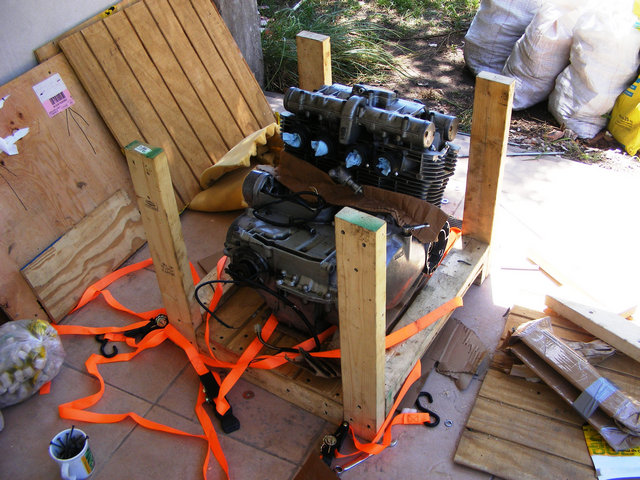

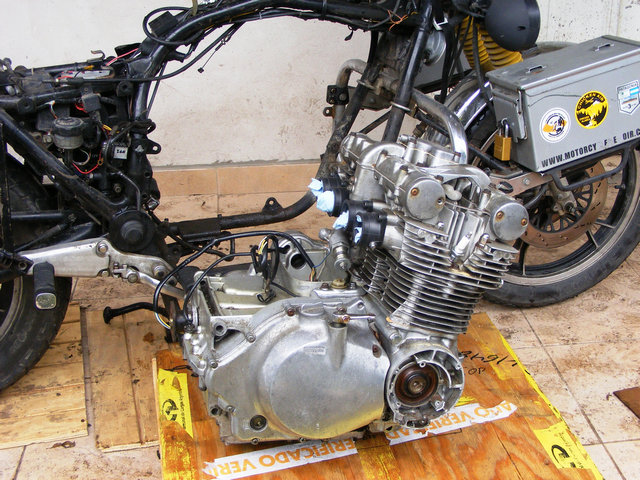







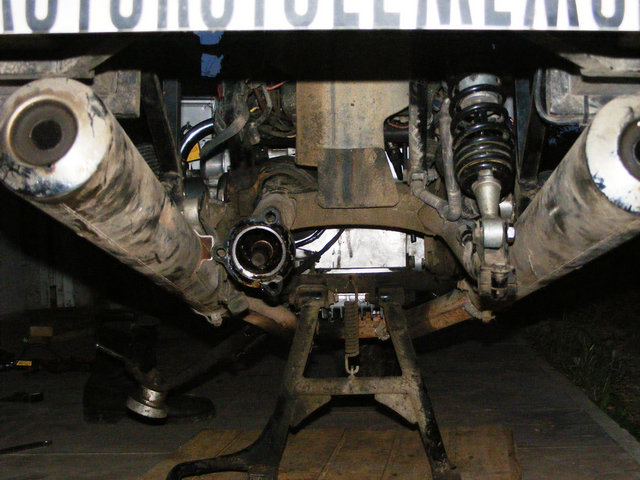

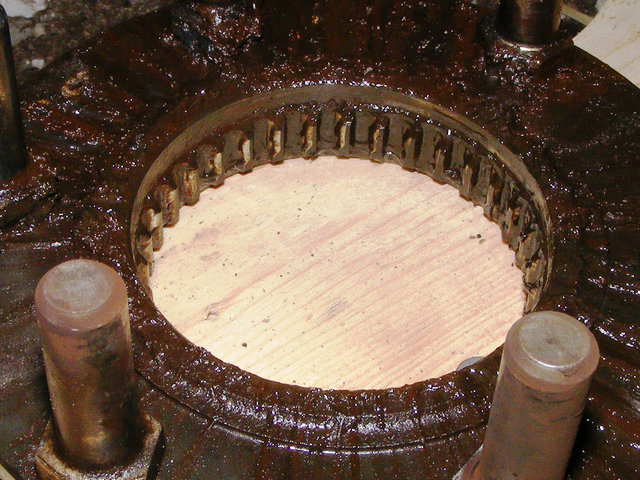
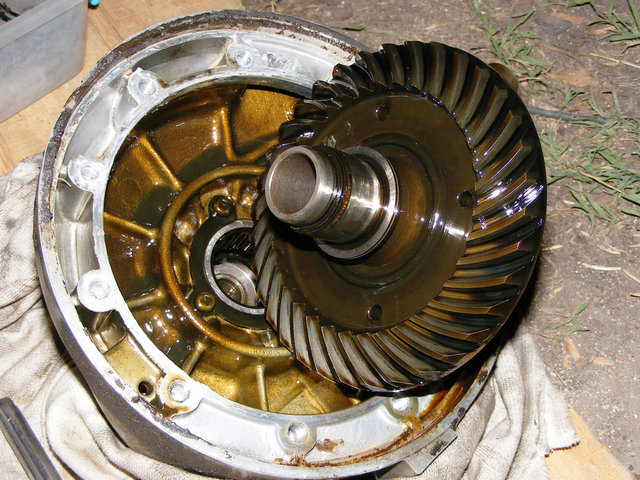
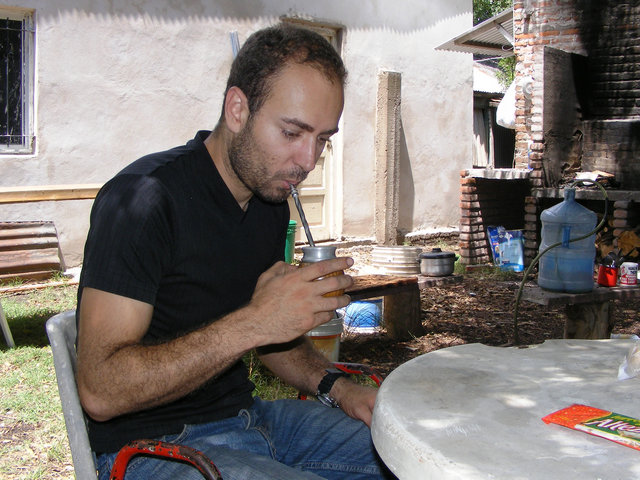
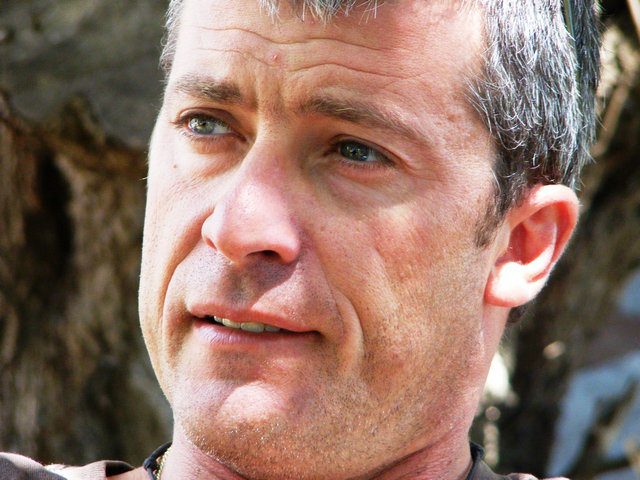














 somewhere.
somewhere.


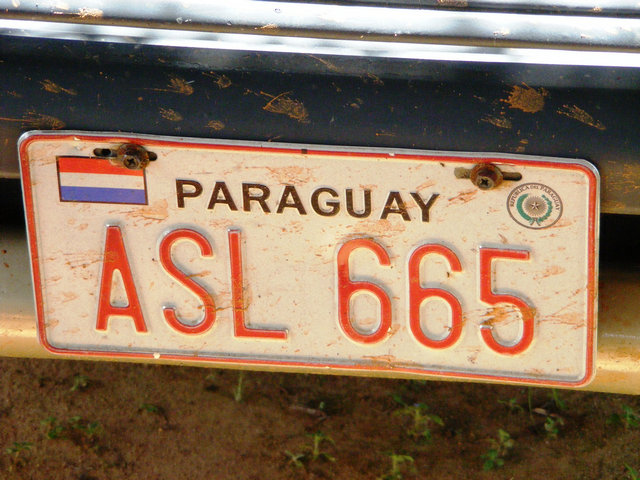












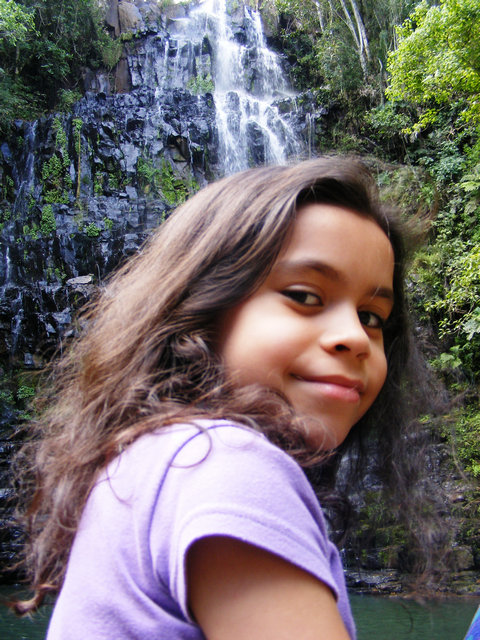

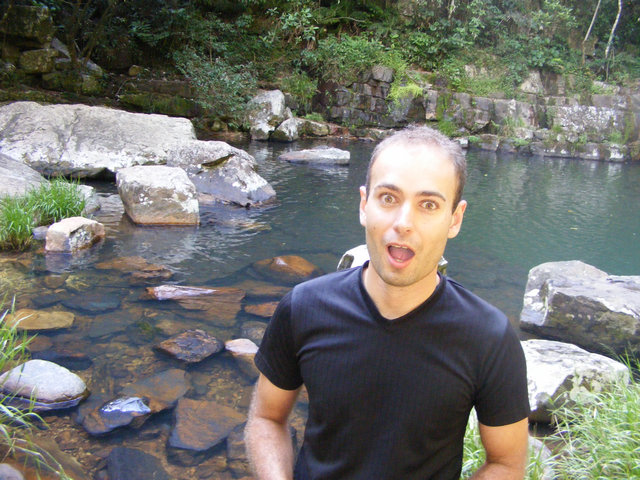


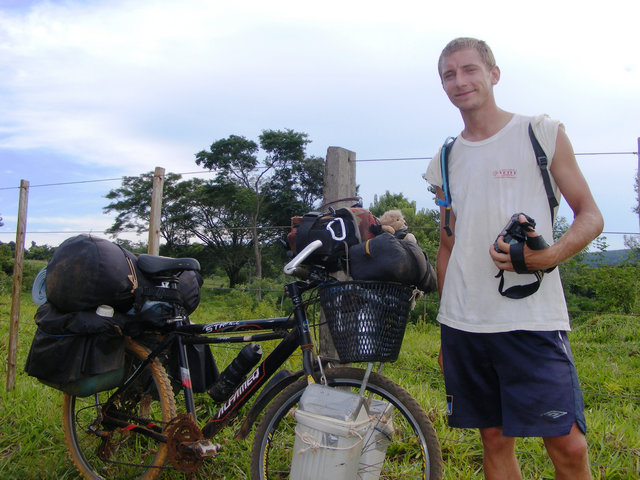






 Because how often do i get to hang out with Miss Paraguay again?
Because how often do i get to hang out with Miss Paraguay again? 
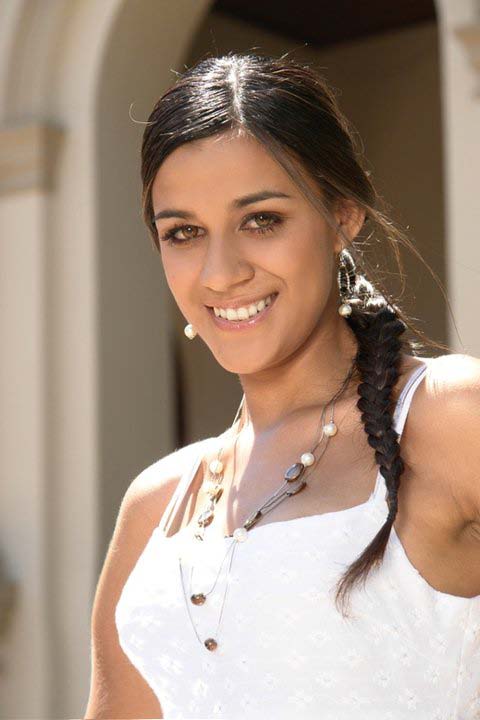




















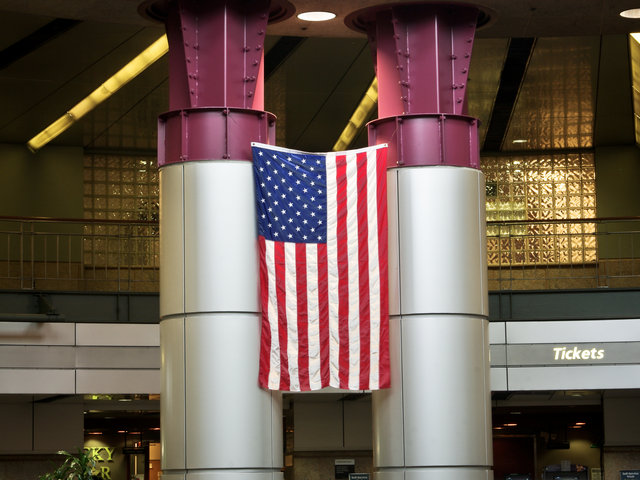



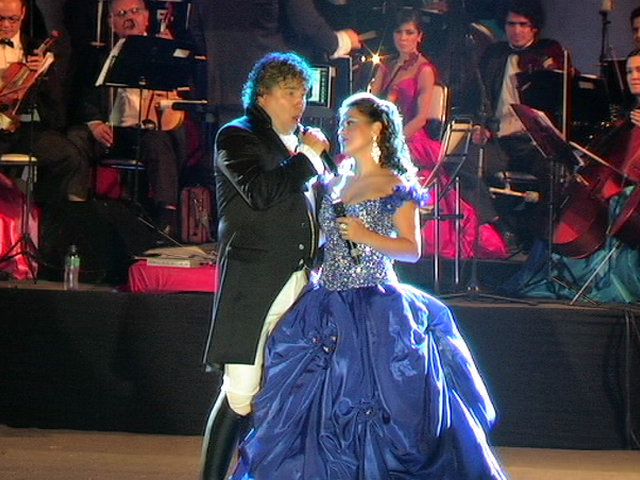
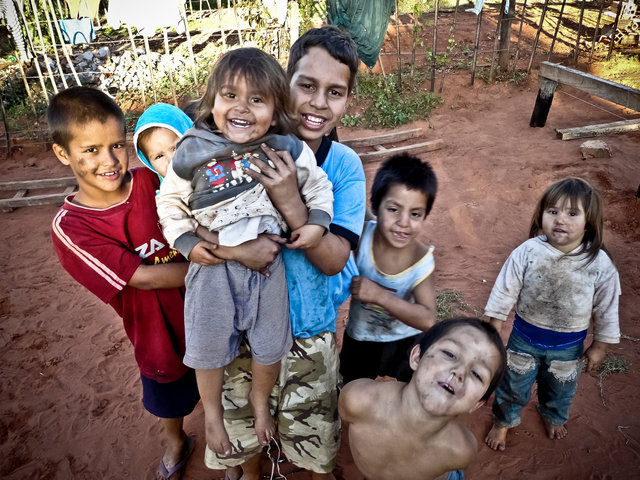


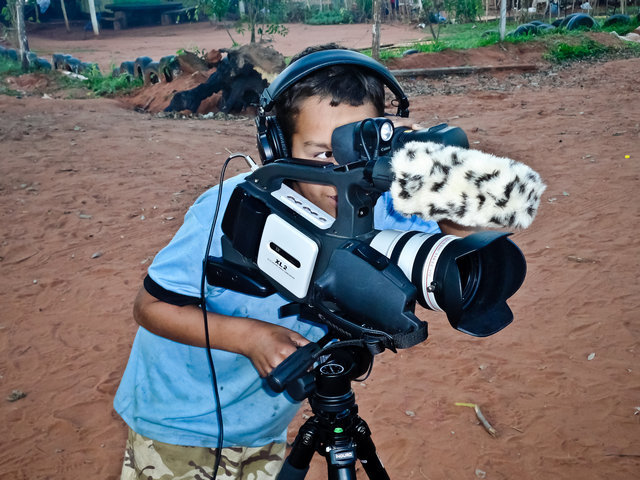

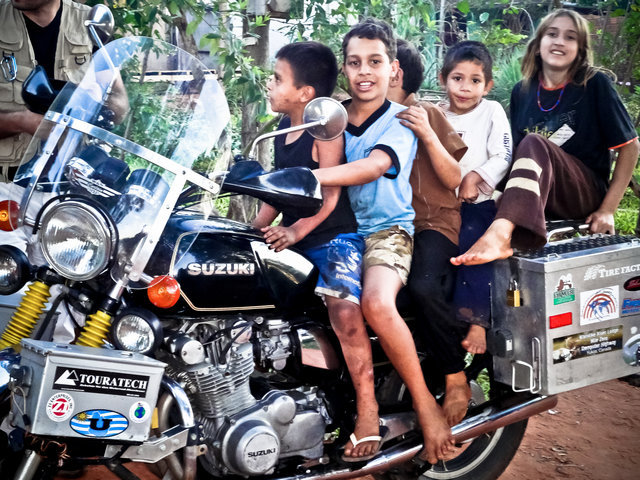


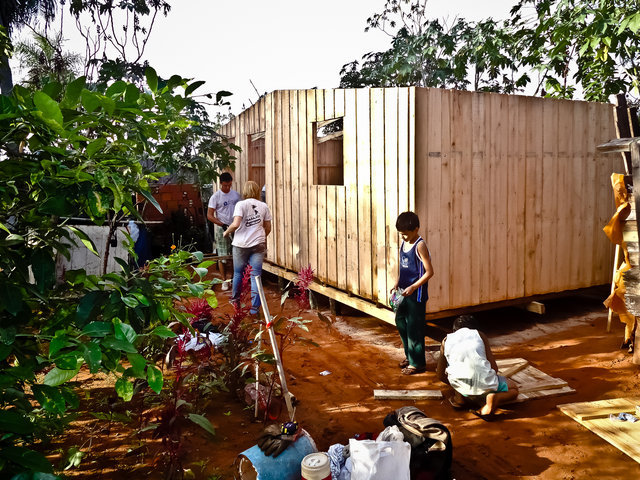



















 Linear Mode
Linear Mode



